Health Care > HESI > HESI PN OB EXAM PACK BEST FOR 2022 EXAM REVIEW 2 Latest Versions (Brand New Q&As !!!) (All)
HESI PN OB EXAM PACK BEST FOR 2022 EXAM REVIEW 2 Latest Versions (Brand New Q&As !!!)
Document Content and Description Below
HESI PN OB EXAM PACK BEST FOR 2022 EXAM REVIEW 2 Latest Versions (Brand New Q&As !!!) 1. A nurse is assessing a client who is at 33 weeks of gestation. Which of the following findings should the nur... se report to the provider? a. Epigastric pain: The nurse should notify the provider of the client's report of epigastric pain because this is a manifestation of preeclampsia. Other findings the nurse should report include severe headache, blurred vision, confusion, nausea and vomiting, and decreased urinary output. b. Leukorrhea: Leukorrhea, or vaginal discharge, is an expected finding throughout pregnancy. Leukorrhea increases during pregnancy due to hypertrophy of the cervix, which increasesthe amount of mucus secreted from the vagina. c. Excessive salivation: Ptyalism, or excessive salivation, is an expected finding in pregnancy. Increased levels of estrogen cause an increase in the production of saliva. d. Darkening of the skin on the face: Hyperpigmentation on the face, or melasma, is an expected finding during pregnancy. The anterior pituitary gland increases the production of melanocyte-stimulating hormone, causing an increase in pigmentation of the skin. 2. A nurse is assessing a newborn following a circumcision 48 hr ago. The nurse should identify that yellow exudate covering the newborn's glans penis indicates which of the following? a. Wound infection: Infected circumcision wounds appearswollen with a purulent discharge. b. Ulceration: Yellow exudate following a circumcision is not a manifestation of an ulceration. c. Exposure to urine: Yellow exudate is not a manifestation resulting from the wound being exposed to urine. d. Healing: After 24 hours, yellow exudate usually forms over the glans penis and remains for the next 2 to 3 days. It sometimes forms a crust, which is expected. The nurse should explain that the yellow film the guardians will see is granulation tissue as the circumcision heals. The guardians should not remove this tissue. 3. A nurse is developing a plan of care for a client who is in the latent phase of labor. Which of the following interventions should the nurse include in the plan to manage the client's pain? a. Encourage the client to listen to music: During the latent phase of labor, the nurse should implement nonpharmacologicalstrategiesto encourage relaxation and provide pain relief. There are a wide variety of cutaneous and sensory measures that are simple to implement during this stage of labor, such as music, rocking, breathing techniques, walking and application of hot or cold packs. b. Instruct the client how to use biofeedback: Biofeedback can be an effective method to reduce the discomfort of labor by promoting self-awareness and relaxation. However, the client must have received instruction and practiced this technique prior to labor for it to be effective. c. Administer fentanyl 100 mcg every hour via intermittent IV bolus…Fentanyl is an opioid agonist analgesic that enhances a client's ability to rest between contractions. However, opioids can also inhibit uterine contractions and prolong labor. Therefore, avoid administration of opioid analgesia until a client reaches the active phase of labor or cervical dilation of at least 4 cm. d. Request the provider administer a pudendal nerve block….A pudendal nerve block relieves pain in the lower vagina and perineum during the second or third stage of labor. It provides anesthesia for episiotomy or repair of lacerations following birth. 4. A nurse is reviewing the laboratory results for a postpartum client who is receiving warfarin for deep-vein thrombosis. Which of the following laboratory tests should the nurse monitor? a. WBC count: The nurse should monitor the WBC count for clients who have conditions such as chorioamnionitis. However, it is not necessary for the nurse to monitor this level for a client who is receiving warfarin therapy. b. International normalized ratio (INR): The nurse should monitor the INR of a client who is taking warfarin. Prothrombin time (PT) is also measured to regulate warfarin therapy. However, PT values are more difficult to interpret. INR is determined by multiplying the PT by a correction factor based on the specific thromboplastin preparation used for the test, as a way of equalizing laboratory-to-laboratory variations. c. Plasminogen levels: Plasminogen isfibrinolytic and is usually elevated during pregnancy. However, it is not necessary for the nurse to monitor this level for a client who is receiving warfarin therapy. d. Activated partial thromboplastin time (aPTT): The nurse should review aPTT if client is receiving heparin. 5. A nurse is reviewing the medical record of a client who has preeclampsia prior to administering labetalol. For which of the following findings should the nurse withhold the medication? a. Uric acid 7.5 mg/dL: The nurse should identify that a uric acid level of 7.5 mg/dL is above the expected reference range of 2.7 to 7.3 mg/dL for a client who is pregnant. Elevated uric acid is a manifestation of preeclampsia and is caused by decreased renal perfusion. However, an elevated uric acid level is not a contraindication for the administration of labetalol, an antihypertensive medication. b. Heart rate 54/min: The nurse should identify that a heart rate of 54/min is below the expected reference range of 60 to 100/min. During pregnancy, the heart rate increases 10 to 15/min due to increased blood volume and increased tissue demands for oxygen. Bradycardia is a contraindication for the administration of labetalol, an antihypertensive medication. Therefore, the nurse should withhold the medication and notify the provider. c. FHR 112/min: The nurse should identify that an FHR of 112/min is within the expected reference range of 110 to 160/min. Preeclampsia can cause a decrease in placental perfusion, leading to fetal hypoxia. The nurse should closely monitor the FHR for manifestations of fetal distress. However, the nurse should not withhold labetalol, an antihypertensive medication, for this finding. d. BUN 23 mg/dL: The nurse should identify that a BUN of 23 mg/dL is above the expected reference range of 10 to 20 mg/dL for a client who is pregnant. An elevated BUN is a manifestation of preeclampsia and is caused by decreased renal perfusion. However, an elevated BUN is not a contraindication for the administration of labetalol, an antihypertensive medication 6. A nurse is assessing a client who is in labor. Which of the following findings should the nurse expect? a. Decrease in WBC count: Physical and emotional stress can lead to an increased WBC count. b. Decrease in blood glucose level: Maternal metabolism, physical exertion, and delivery of the placenta can lead to a decreased blood glucose level. c. Decrease in respiratory rate: Anxiety and increased oxygen consumption from physical exertion during labor can lead to an increased respiratory rate. d. Decrease in temperature: Vascular changes during labor can lead to an elevated temperature, flushed cheeks, and warm skin. 7. A nurse is caring for a newborn immediately following birth who has meconium-stained amniotic fluid and exhibits good muscle tone and respiratory efforts. Which of the following actions should the nurse take first? a. Dry the newborn: The nurse should dry the newborn to reduce evaporative heat loss; however, another action is the priority. b. Provide tactile stimulation for the newborn.: Tactile stimulation might be required to elicit crying efforts by the newborn; however, another action isthe priority. Tactile stimulation prior to suctioning of the mouth and pharynx can cause meconium to enter the airways of the newborn. c. Begin suctioning of mouth and nose.: The greatest risk to the newborn is injury from meconium aspiration syndrome and respiratory distress; therefore, the priority action the nurse should take is to suction the mouth and nose. The nurse should assess the newborn's condition at birth and suction the newborn's mouth and nose with a bulb syringe based on the assessment findings. If the newborn's respiratory status is depressed, endotracheal suctioning must be done as well to remove any meconium that has entered the newborn's airways. d. Initiate skin-to-skin contact.: Thermoregulation isimportant for all newborns, especially newborns whose respiratory status might be compromised; however, another action is the priority. [Show More]
Last updated: 1 year ago
Preview 1 out of 38 pages
.png)
Reviews( 0 )
Document information
Connected school, study & course
About the document
Uploaded On
Jul 08, 2022
Number of pages
38
Written in
Additional information
This document has been written for:
Uploaded
Jul 08, 2022
Downloads
0
Views
61
 Exit Exam Brand New Questions and Answers Guaranteed Pass With A+ Score.png)


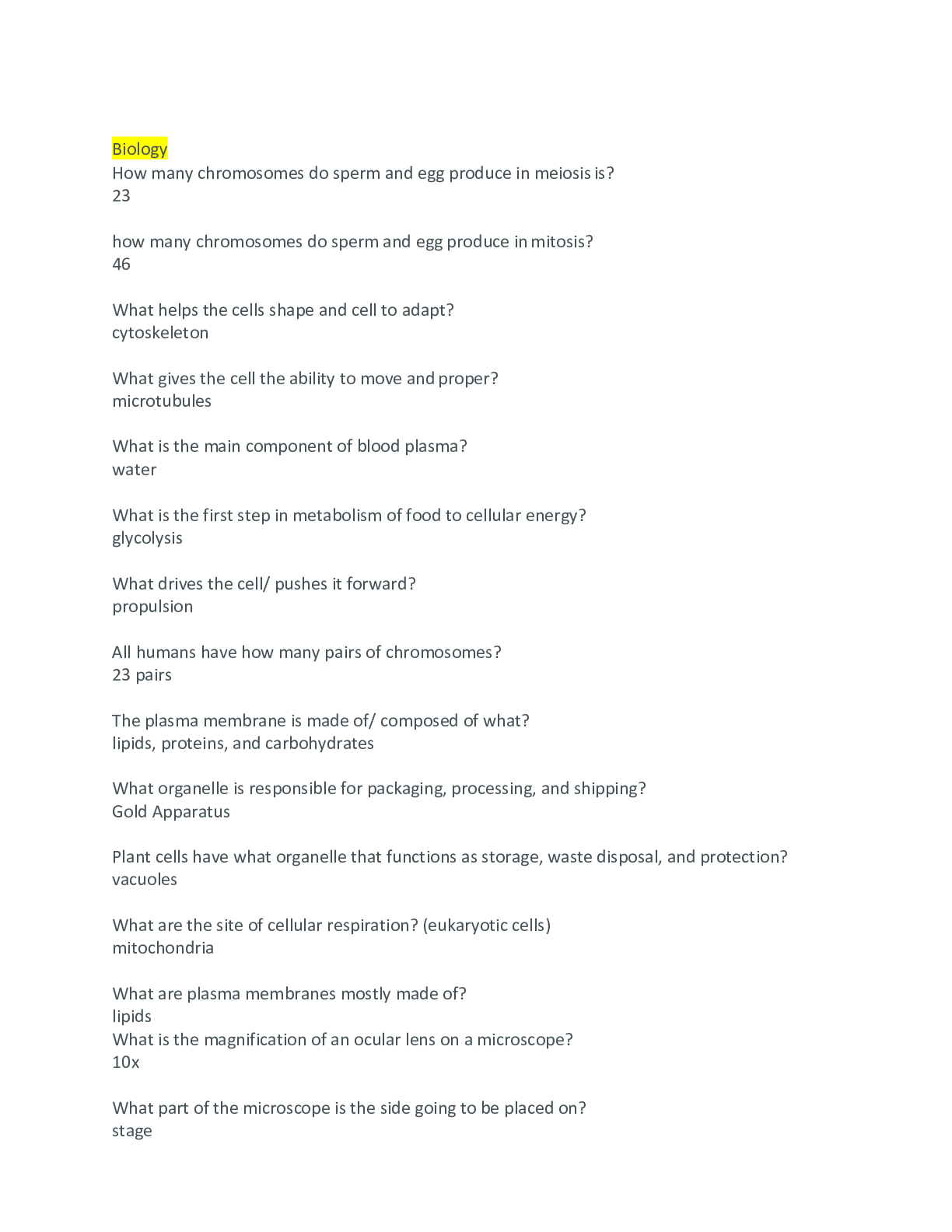


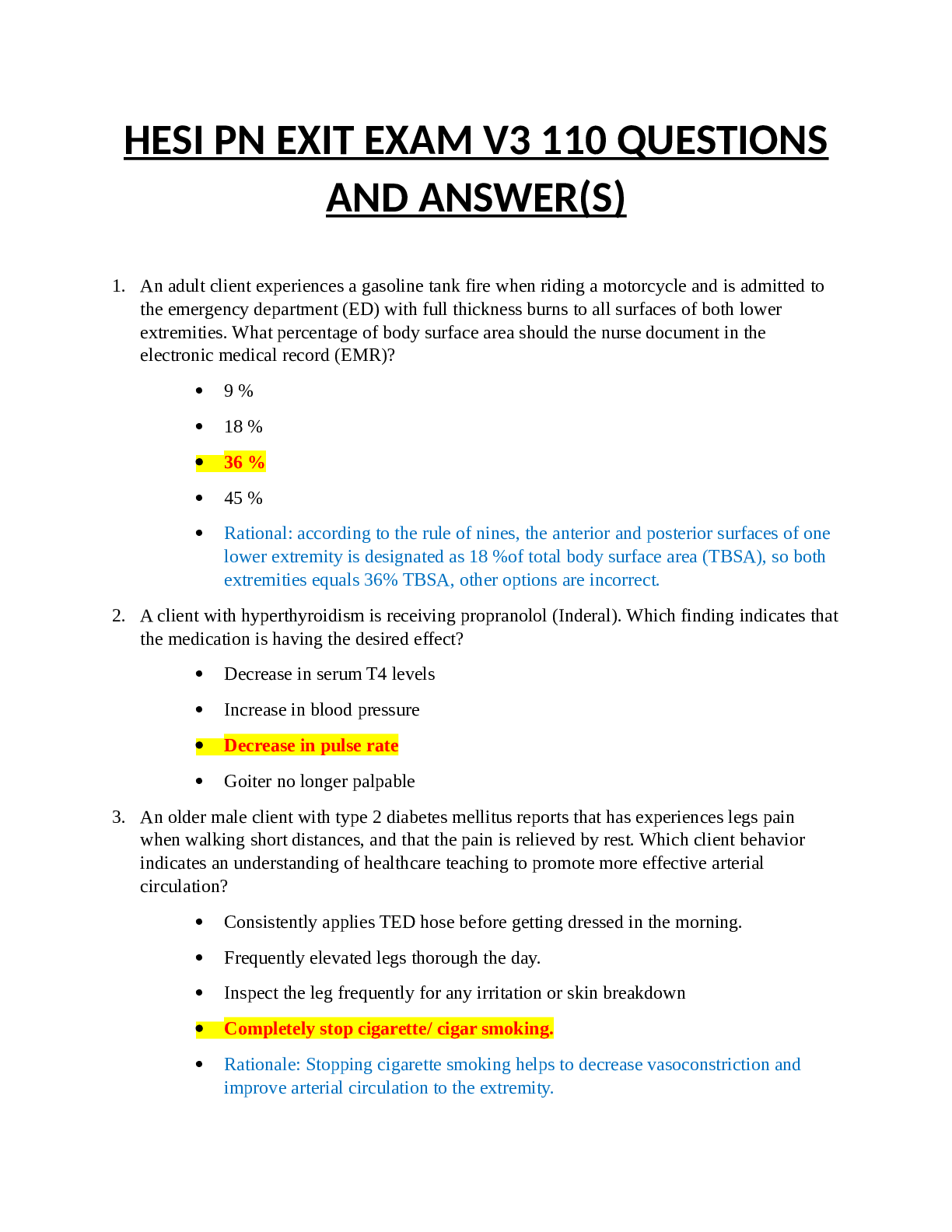
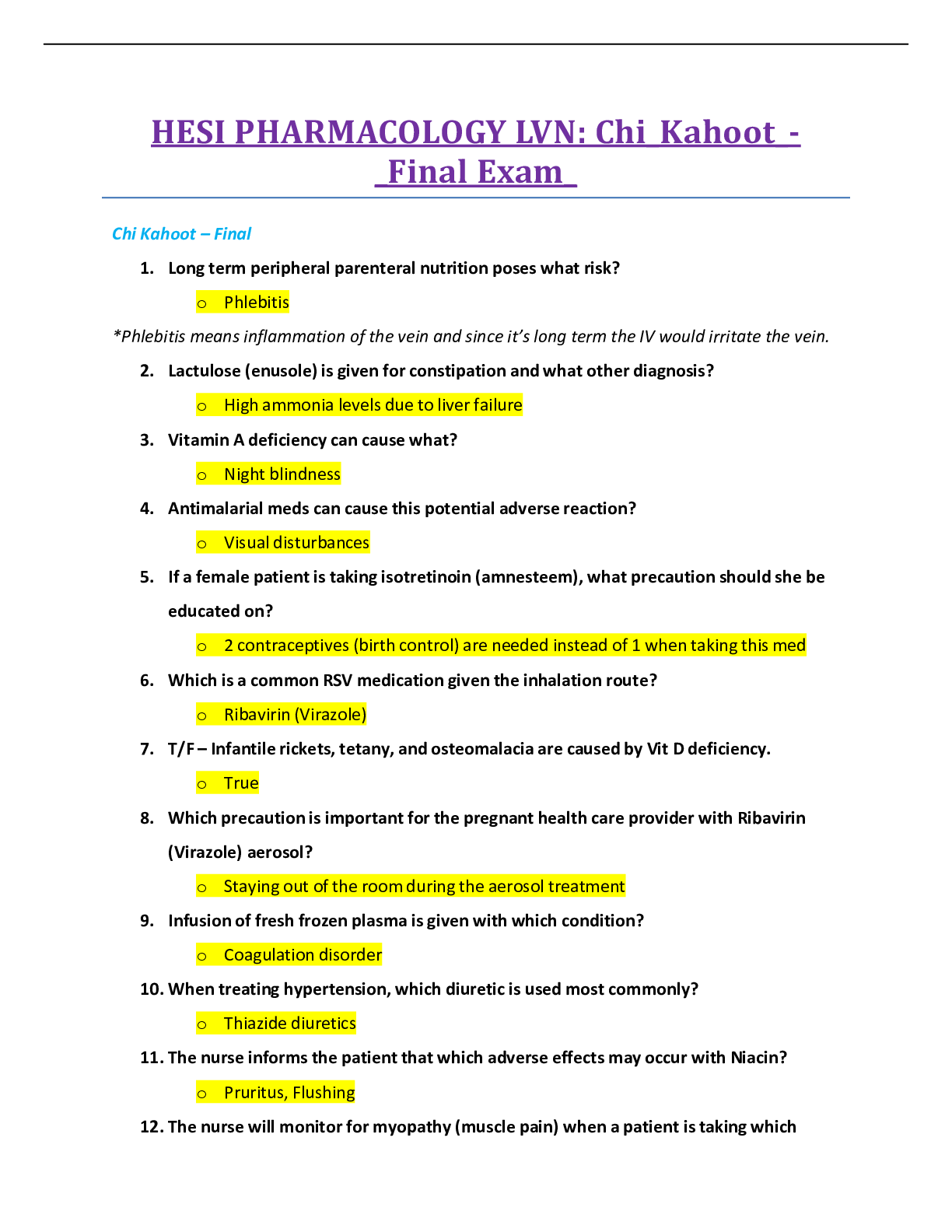


 Designed to Help You S core A+ HEALTH ASSESSMENT HESI TEST BANK; Fall 2022.png)
 RN EXIT Version 1 and Version 2 EXAM TAKEN JAN 2022 GRADED A+ Screenshots Provided For All Questions.png)
 – All 160 Questions & Answers!! (Actual Screenshots from exam taken in April 2022 A+) (All Included!!) (I received 1178 score).png)


.png)
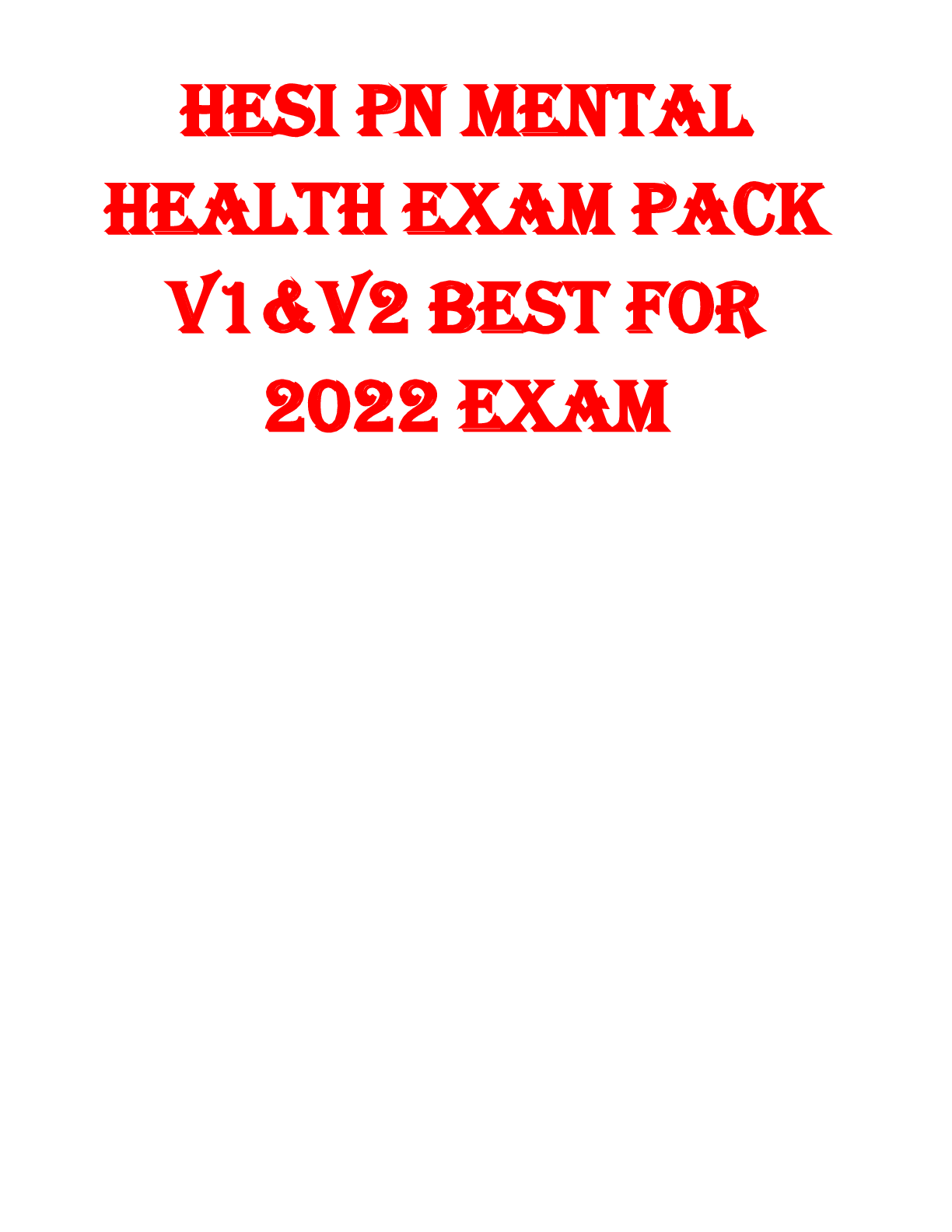


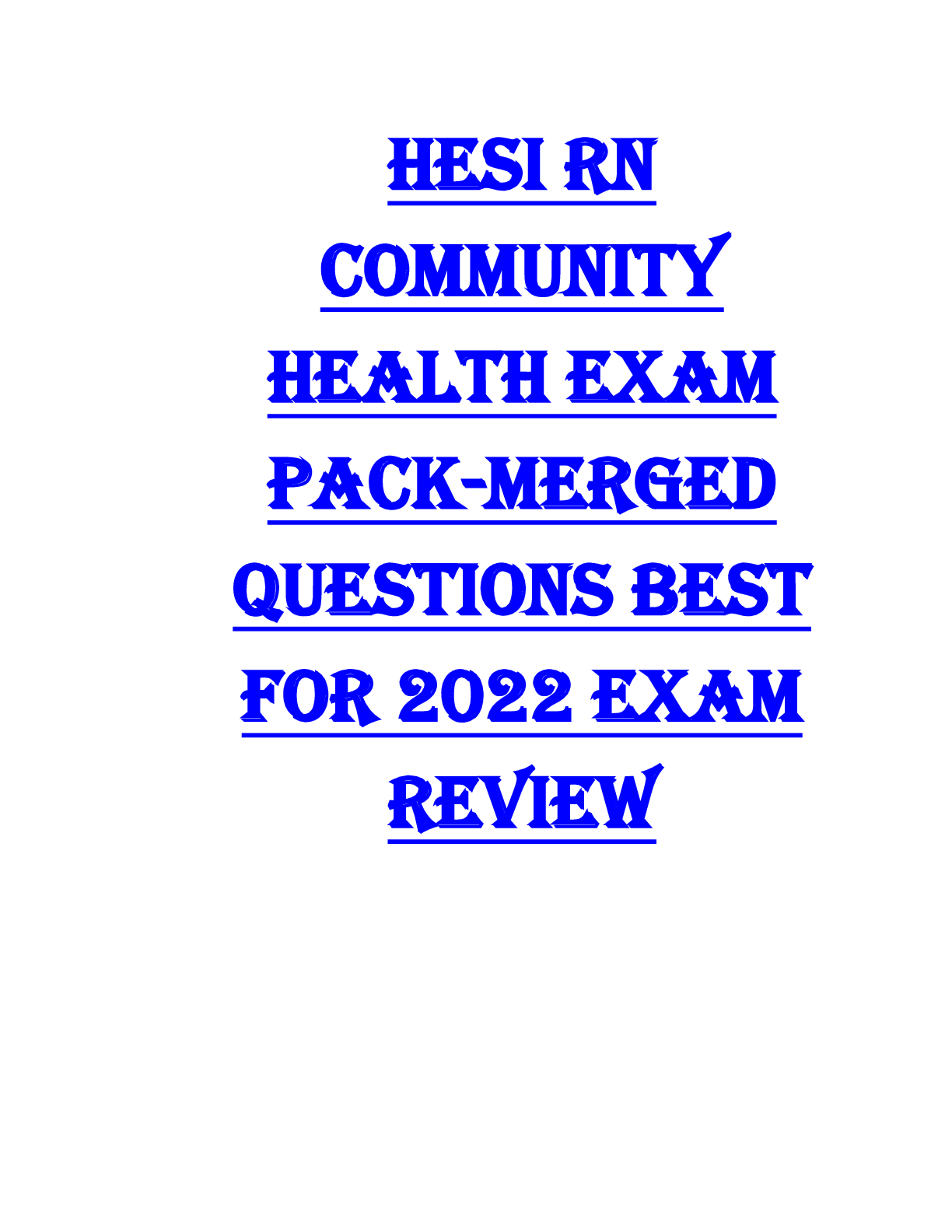


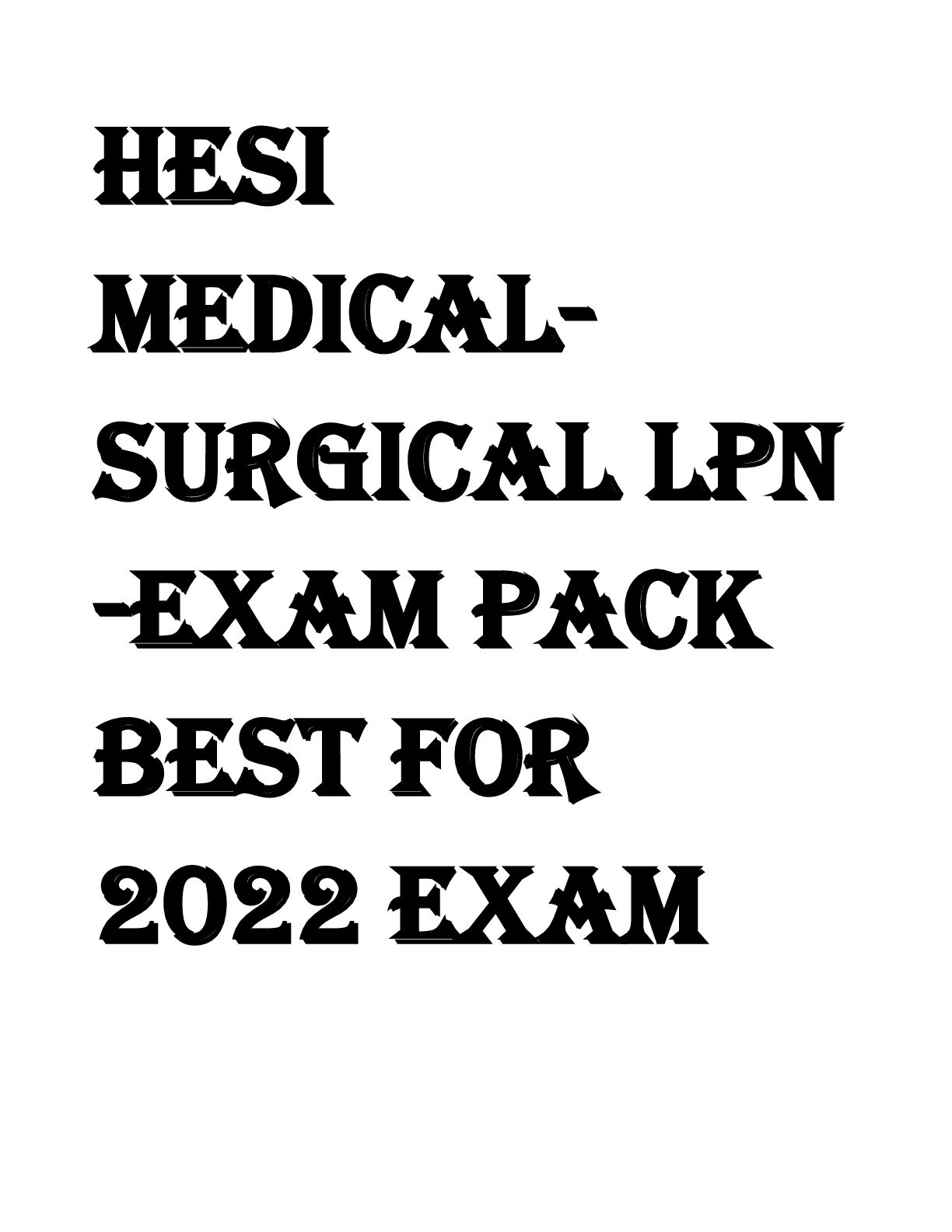

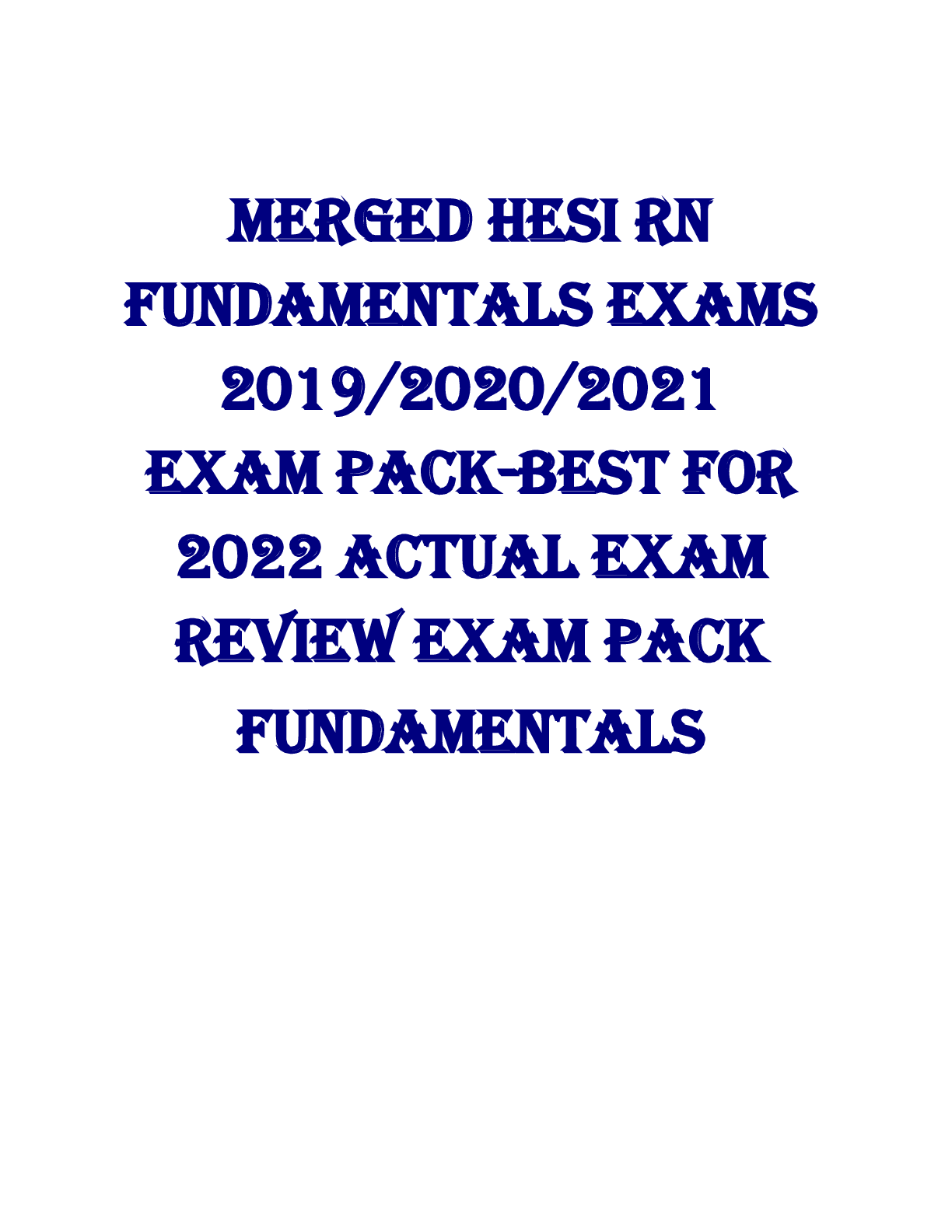
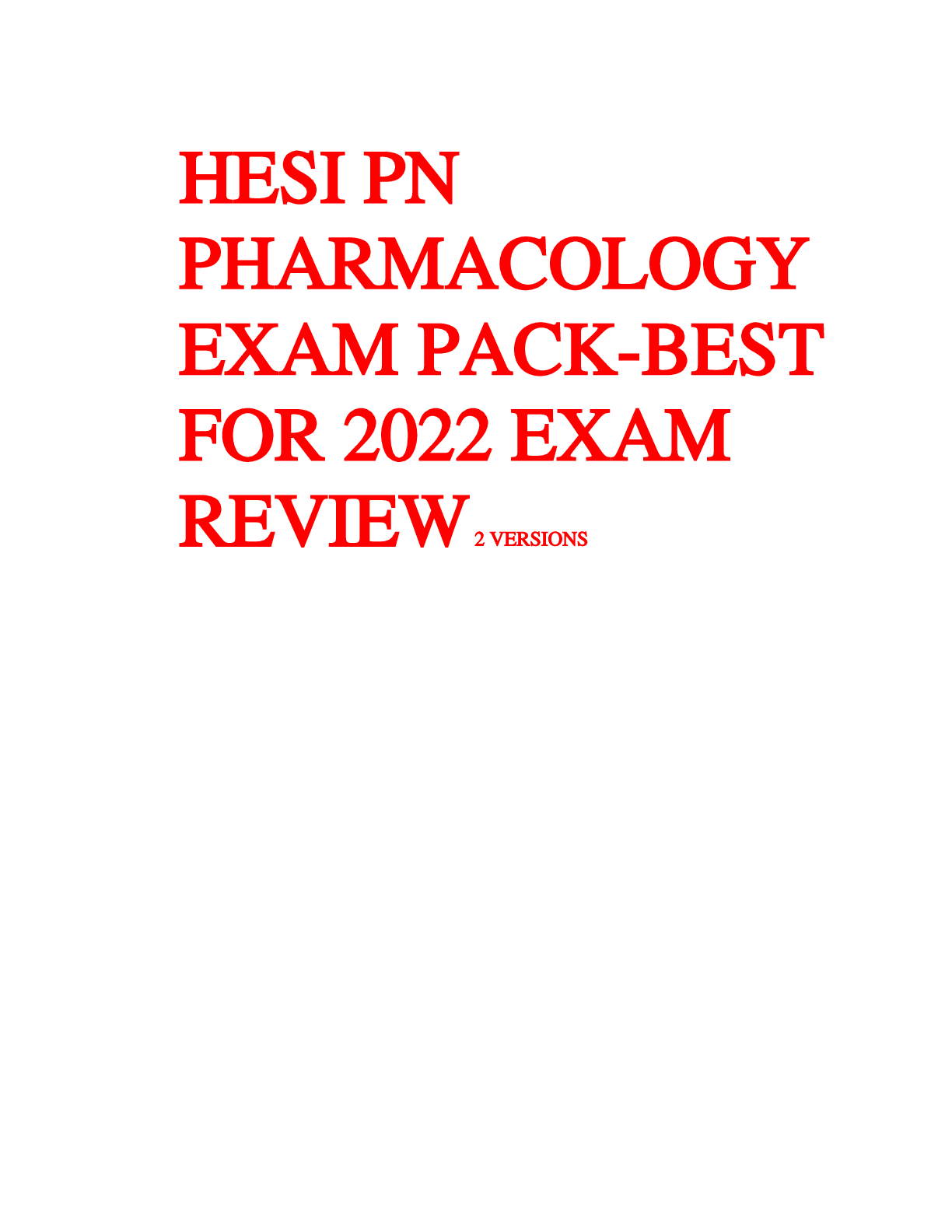
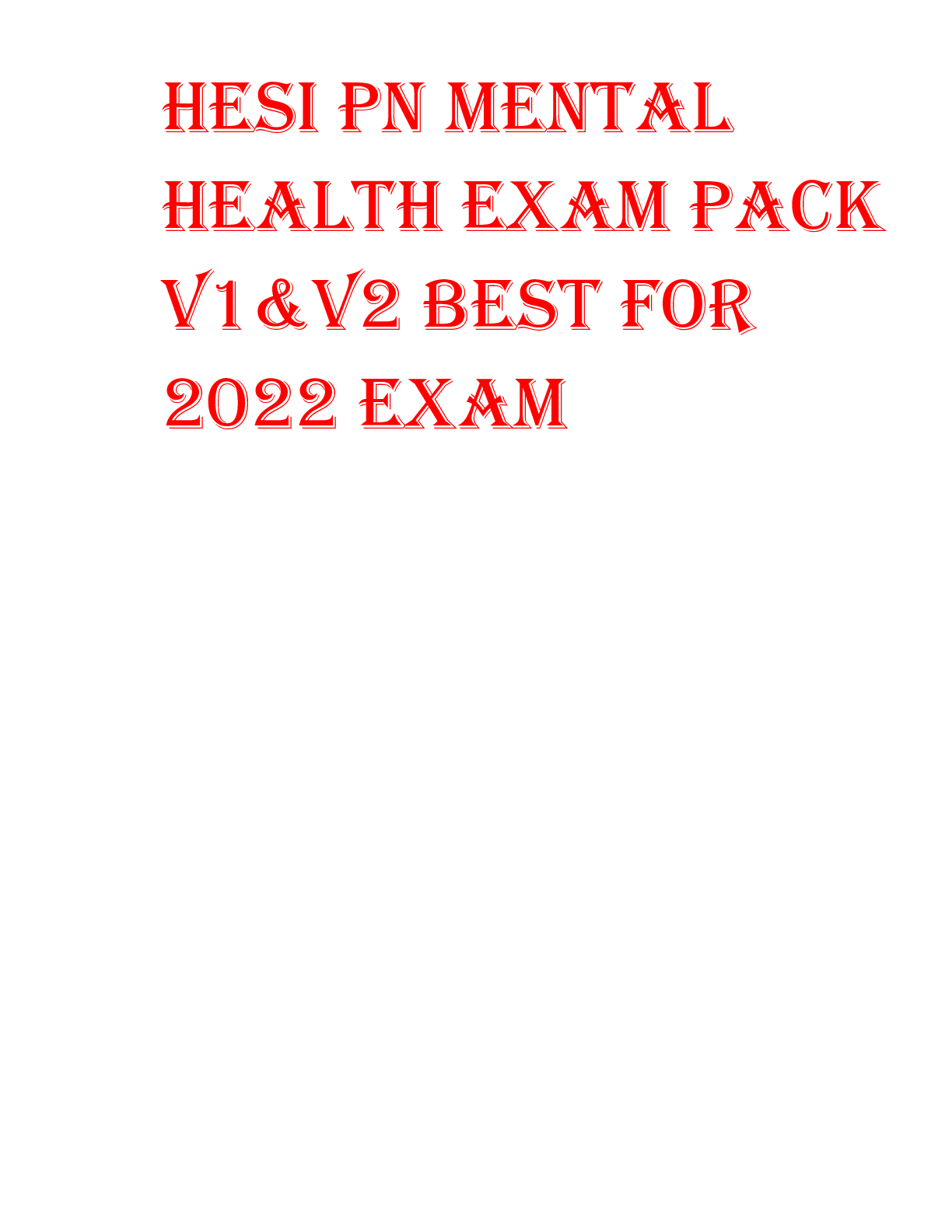


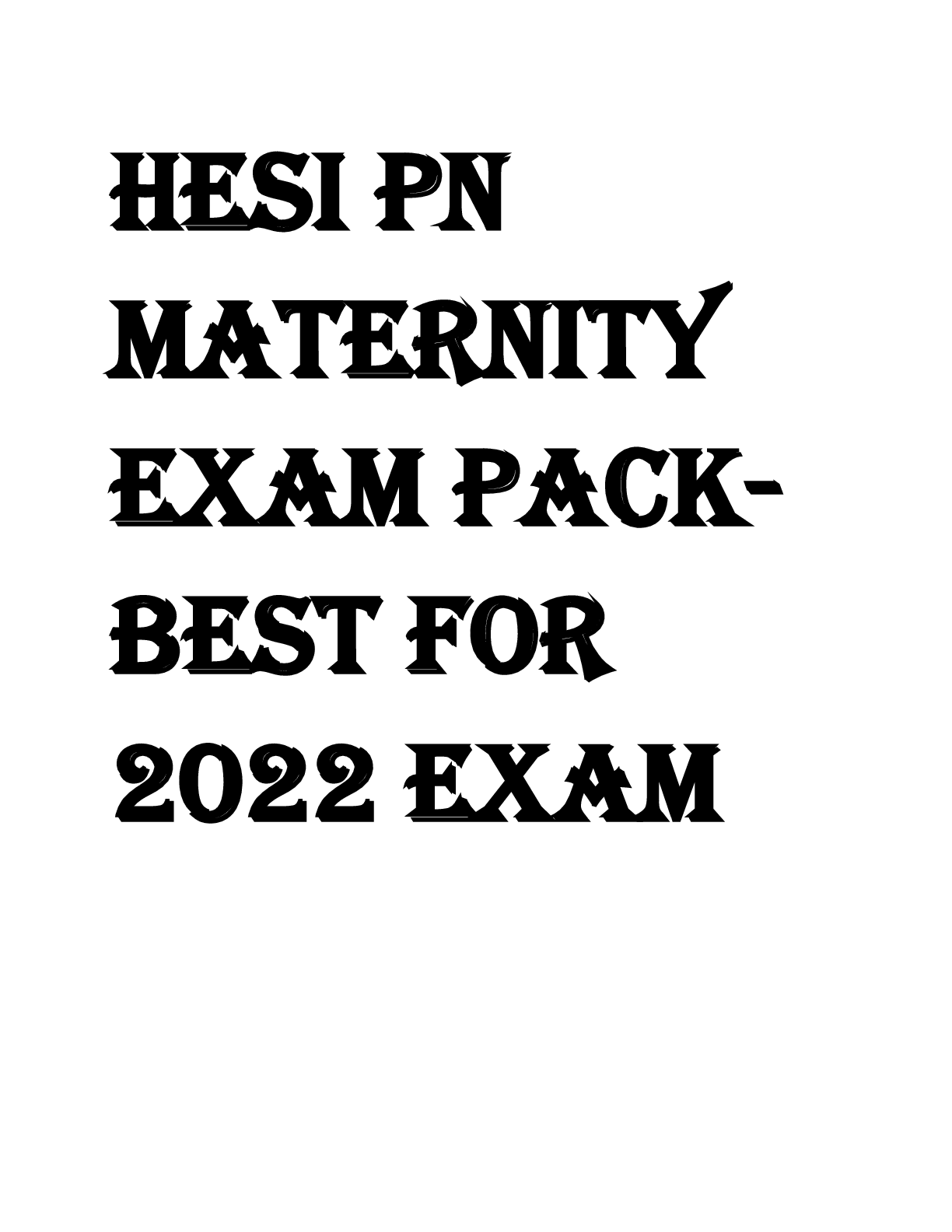


.png)
.png)
.png)

